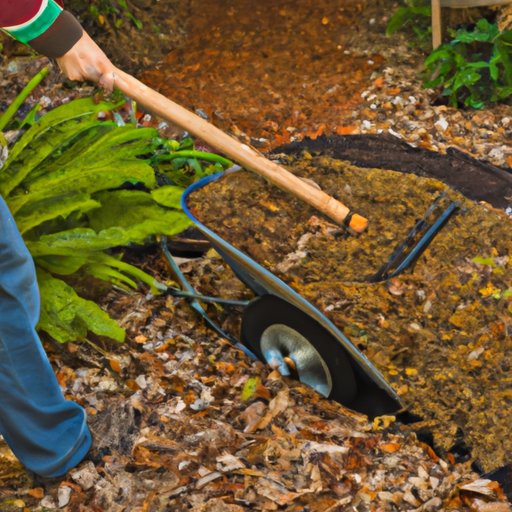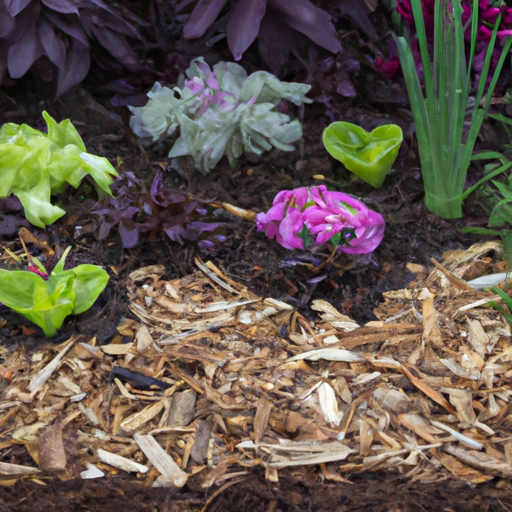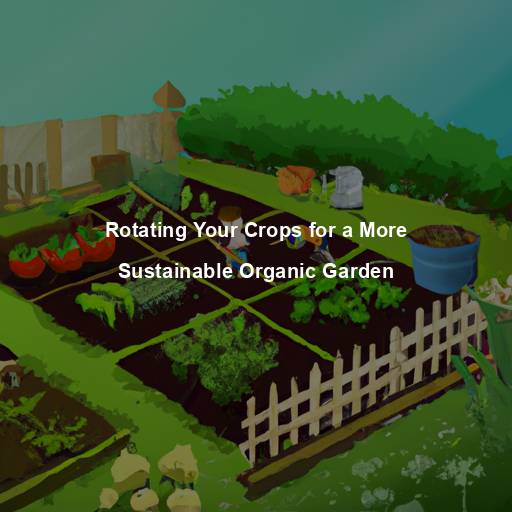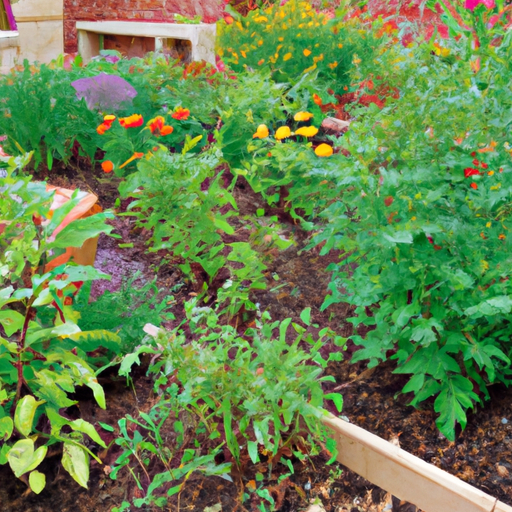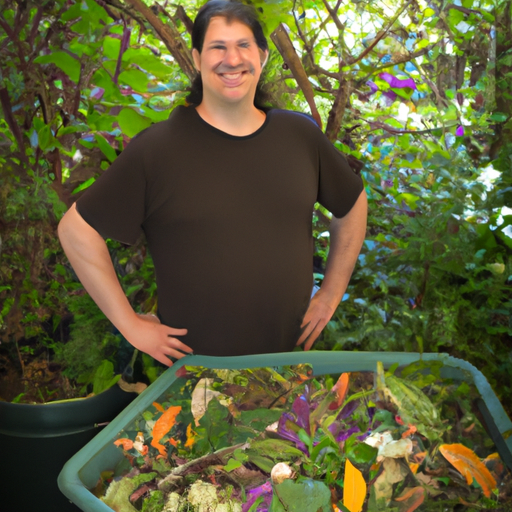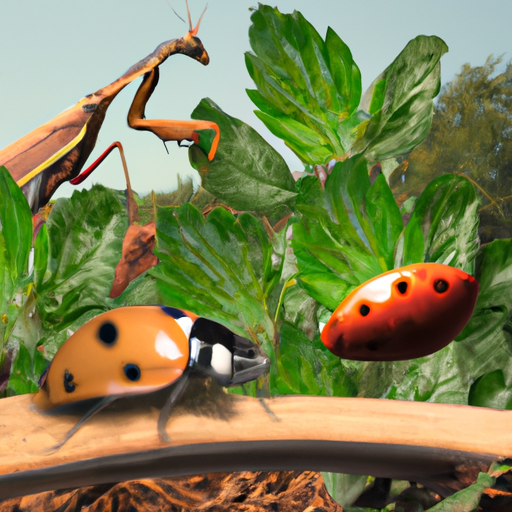Welcome fellow garden enthusiasts!
As a Master Gardener, I am always looking for simple and effective methods to improve the health of our plants.
One technique that has proved its worth time and time again is organic mulching. Mulch helps retain moisture in your soil, suppresses weeds, moderates soil temperature, and adds valuable nutrients back into your garden beds.
But did you know that making your own organic mulch can be just as beneficial as store-bought options? Not only is it more affordable, but it also allows you to control exactly what goes into your garden.
In this article, we will explore DIY organic mulching techniques that are easy to make and provide excellent results for any type of garden.
So grab your gardening gloves and let’s get started!
Benefits Of Organic Mulching For Your Garden
As a Master Gardener, I can confidently say that organic mulching is one of the best things you can do for your garden.
Not only does it provide natural soil enrichment and improve drainage, but it also helps to control weeds.
By using natural materials like leaves, straw, or grass clippings as mulch, you are creating a protective barrier around your plants which prevents weed seeds from germinating and competing with your crops for nutrients.
Additionally, as the mulch breaks down over time, it releases valuable nutrients into the soil which nourish your plants and promote healthy growth.
So why spend money on expensive chemicals when you can achieve better results through simple and affordable organic practices?
Your garden (and wallet) will thank you!
Choosing The Right Materials For Your Diy Mulch
Now that you know the benefits of organic mulching for your garden, it’s time to choose the right materials for your DIY mulch. When selecting between natural and synthetic options, always opt for natural as they are more sustainable and offer better long-term benefits for soil health.
Some popular choices include straw, leaves, grass clippings, wood chips, and pine needles. Each material has its unique set of advantages; straw is great for vegetable gardens as it breaks down quickly, while wood chips provide excellent moisture retention in flower beds.
Color options also play a significant role in choosing the perfect mulch for your garden design. Darker shades like black or brown help absorb heat and warm up soils faster in spring but can be unattractive on light-colored plants. Lighter shades like beige or golden yellow add a decorative element to the landscape but may not retain moisture efficiently compared to darker counterparts.
Remember to consider these factors when making a decision and have fun experimenting with different kinds of organic mulches!
Preparing And Applying Your Homemade Mulch
Now that you have created your own organic mulch, it is time to prepare and apply it in your garden.
First, consider the different types of mulch available – such as straw, leaves, grass clippings or wood chips – and choose one that best suits your needs.
Before applying the mulch, make sure to weed thoroughly and water the soil so that it is moist but not soaking wet.
Spread a layer of mulch around your plants, making sure to keep it at least two inches away from their stems to prevent rotting.
You can also use an application technique called ‘sheet composting’ where you lay down newspaper or cardboard first before adding your homemade mulch on top.
Remember to reapply your homemade mulch every year or as needed depending on how quickly it decomposes.
This will help retain moisture in the soil while suppressing weeds and improving overall soil health.
By using these simple techniques for preparing and applying your organic mulch, you’ll be well on your way to creating a thriving garden without breaking the bank!
Maintaining Your Garden With Organic Mulch
As a Master Gardener, I highly recommend maintaining your garden with organic mulch.
Not only does it help retain moisture in the soil and prevent weeds from sprouting, but it also adds nutrients to the soil as it breaks down over time.
The benefits of mulching are numerous, whether you’re an experienced gardener or just starting out.
It’s affordable, easy to apply, and can improve the overall health of your plants.
When choosing types of organic materials for mulch, consider using leaves, straw, grass clippings, or even shredded newspaper.
These materials will break down slowly and provide long-lasting benefits to your garden.
Remember to avoid using fresh manure or diseased plant material as they may introduce harmful pests or diseases into your garden.
With proper maintenance and regular application of organic mulch, your garden will thrive all season long!
Comparing Diy And Store-Bought Mulch Options
Now that you know the importance of maintaining your garden with organic mulch, it’s time to consider which option is best for you: DIY or store-bought. Both options have their pros and cons, so it ultimately comes down to personal preference and budget.
Here are some factors to consider when making your decision:
– Pros and Cons:
DIY Mulch
Pros:
• You can control what materials go into your mulch.
• It’s often more affordable than store-bought options.
Cons:
• It may take more time and effort to gather materials and create the mulch.
• The quality may vary depending on the materials used.
Store-Bought Mulch
Pros:
• Convenient – no need to gather materials or spend time creating the mulch yourself.
• Often made from high-quality materials that provide consistent results.
Cons:
• May be more expensive than DIY options.
• Some store-bought mulches may contain chemicals that could harm your plants.
Cost Comparison:
When comparing cost between DIY and store-bought mulching, keep in mind that while DIY may seem cheaper at first glance, there are hidden costs such as transportation, equipment rental/purchase, and labor. On the other hand, store-bought mulching has a fixed price point but offers convenience and reliability.
Ultimately, whether you choose DIY or store-bought mulching will depend on your specific needs and preferences. Consider all factors before making a decision to ensure you get the best results for your garden.
Frequently Asked Questions
What Are Some Common Mistakes People Make When Applying Organic Mulch To Their Garden?
When it comes to properly applying organic mulch to your garden, there are some common mistakes that people tend to make.
One of the most frequent errors is laying down too thick of a layer, which can actually suffocate and harm plants rather than helping them grow.
It’s important to follow proper application techniques such as spreading the mulch evenly and not piling it up against plant stems or trunks.
Additionally, using the wrong type of mulch for your specific plants or soil can also be detrimental.
It’s crucial to do your research before choosing a mulch so you can ensure it will benefit your garden instead of causing harm.
By avoiding these common mistakes and following proper application methods, you’ll be able to effectively use organic mulch in your garden to promote healthy growth and a thriving ecosystem.
Can Certain Types Of Organic Mulch Attract Pests Or Insects To Your Garden?
When it comes to mulching, one concern that gardeners may have is whether certain types of organic mulch can attract pests or insects to their garden.
While organic mulch can provide numerous benefits such as retaining moisture and suppressing weeds, some types like wood chips and bark may attract termites, ants, and other critters.
In contrast, inorganic mulch options like stone or rubber don’t attract pests but lack the soil-enriching properties of organic materials.
As a Master Gardener, it’s important to weigh the advantages and disadvantages of different types of mulch before choosing which one to use in your garden.
How Often Should You Add New Layers Of Organic Mulch To Your Garden?
When it comes to organic mulching, one common question that arises is how often you should add new layers. The answer depends on several factors such as the type of organic mulch used and the weather conditions in your area.
Generally speaking, most types of organic mulch can last for up to a year before they need to be replenished. However, there are some benefits to adding fresh layers more frequently, such as improving soil health and preventing weed growth.
If you’re unsure about when to add new layers or which types of organic mulch to use, consult with a Master Gardener who can provide expert advice tailored to your specific garden needs.
Are There Any Plants That Should Not Be Mulched With Organic Materials?
When it comes to mulching your garden, it’s important to consider which plants may be sensitive to certain organic materials.
Some plants, such as succulents and cacti, prefer drier soil conditions and can actually suffer from over-mulching or the use of certain types of organic matter like grass clippings or fresh manure.
In these cases, mulching alternatives for sensitive plants might include using small rocks or gravel instead.
Additionally, it’s worth noting that some types of organic mulch can impact soil pH levels over time.
Pine needles, for example, are acidic and can lower pH levels in the soil if used excessively.
As a Master Gardener, I recommend testing your soil regularly to ensure that you’re maintaining optimal growing conditions for all of your plants.
Can You Use Homemade Organic Mulch For Indoor Potted Plants?
Ah, indoor gardening. A hobby that requires a green thumb and an affinity for dirt under the fingernails.
But fear not, my fellow Master Gardeners! With the rise of DIY organic fertilizers, we can now enjoy the benefits of using organic mulch in our indoor gardens without breaking the bank.
And yes, you heard it right – homemade organic mulch is absolutely suitable for potted plants. Not only does it provide nutrients to your beloved greens, but it also helps retain moisture in soil and suppresses weed growth.
So go ahead and indulge in some good old-fashioned composting – your houseplants will thank you for it!
Conclusion
In conclusion, DIY organic mulching is an excellent way to nourish your garden while also being affordable and effective. As a Master Gardener, I highly recommend taking the time to properly apply organic mulch in your garden by avoiding common mistakes such as piling it too thickly or placing it directly against plant stems.
Remember that some types of organic mulch can attract pests or insects, so choose wisely based on your specific needs. Also keep in mind that adding new layers should be done every few months and certain plants may not benefit from organic materials.
With proper care, you’ll soon see the benefits of using homemade organic mulch for both outdoor gardens and indoor potted plants alike! So go ahead and give it a try – your plants will thank you with stunning blooms and lush foliage that are sure to delight the senses!
